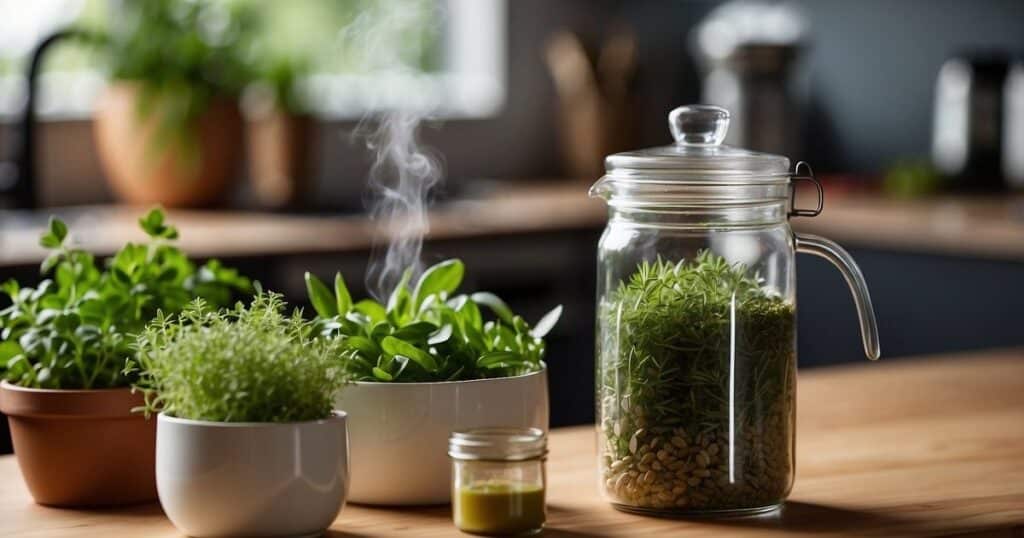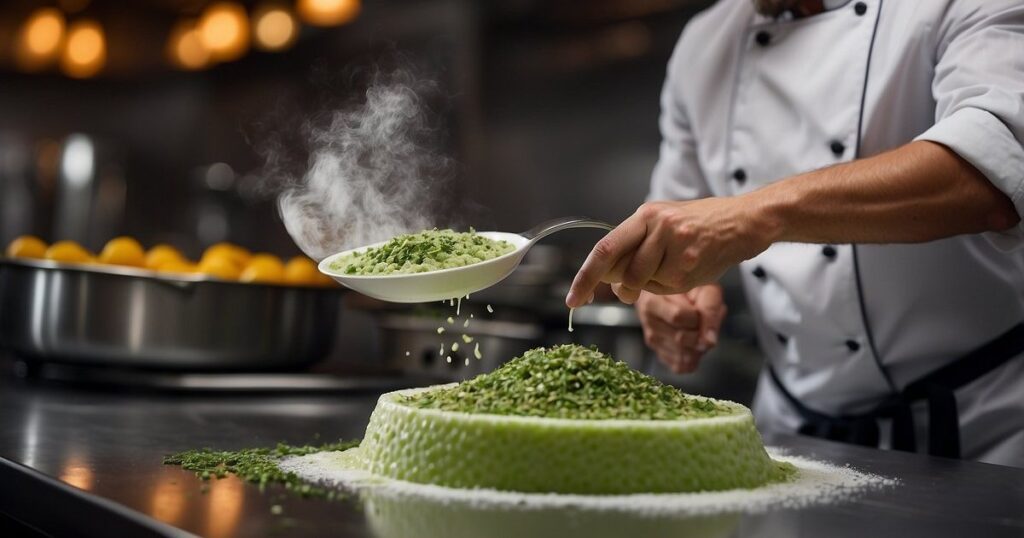Herb-Infused Savory Foam Recipe: Elevate Your Culinary Creations
The Biggest Cream Charger Knowledge Base Online
Creating a sophisticated herb-infused savory foam can elevate your culinary creations to a new realm of flavor and presentation. Using Exotic Whip products, you can achieve a perfectly airy and stable foam that complements various dishes seamlessly. The process involves combining your choice of savory herbs, such as thyme or rosemary, with a thickening agent and infusing this mixture into a liquid base.
The use of a whipping siphon ensures a smooth and consistent texture, providing you with the modernist touch of molecular gastronomy. By experimenting with different herbs, you can modify the flavor profile to suit your specific culinary needs, whether adding a hint of herby freshness to meats, beans, or poultry.
Culinary foams are not just a visual delight but also enhance the sensory experience of your dish. The light, frothy texture contrasts beautifully with the other components on the plate, making your dishes stand out not only in taste but also in presentation. When done correctly, herb-infused savory foam becomes an integral part of high-end cooking, making your meals memorable and impressively gourmet.
Preparing the Base for Savory Foam

Successful savory foams begin with carefully selected ingredients, infused liquids, and the right techniques and tools. This ensures that the resulting foam has the desired flavor, texture, and stability.
Choosing the Right Ingredients
Start with fresh, aromatic herbs like thyme, rosemary, and garlic to create a strong and appealing flavor base. Dried herbs can also work, but fresh herbs usually provide a more vibrant taste.
You will also need a liquid base such as milk, cream, or even a light broth for added depth. Ingredients like lecithin and agar agar are crucial for achieving the right foam stability. These will help the foam hold its structure once it’s been whipped.
Salt and pepper are essential for seasoning. Make sure to taste and adjust these to ensure the foam complements your dish, adding a balanced burst of flavor without overpowering it.
Creating Infused Liquids
Begin by heating your chosen liquid (e.g., milk or cream) on a medium flame. Add the selected herbs and let them simmer to release their flavors. Garlic can be chopped and added at this stage for a robust aroma.
Once infused, strain the liquid to remove the herbs and garlic, leaving a smooth, flavorful base. Cooling the liquid over iced water helps to speed up the process and ensures the ingredients remain fresh.
If using dried herbs, remember they can require longer steeping times to release their full flavors. Combining fresh thyme and rosemary can offer a complex and enticing aroma.
Techniques and Tools
A whipping siphon is ideal for converting your infused liquid into foam. This tool not only incorporates air but also stabilizes the foam. Use the siphon to introduce gas into the liquid, creating a light and airy foam.
Immersion blenders are useful for lighter, froth-like foams, but a siphon is better for thicker, more stable foams. Add a stabilizer like a lecithin or agar agar to help the foam hold its texture. Whipping for the right amount of time ensures you’re not left with a dense mousse but a light, airy foam perfect for enhancing dishes.
Exotic Whip products make this process simpler. They provide pre-measured amounts of stabilizers and flavorings, guaranteeing consistent results. Follow the provided instructions closely to achieve the best texture and flavor in your savory foam.
Herb Pairings and Culinary Applications

Using the right herb pairings can elevate the taste of your savory foams. Different culinary traditions and historical uses provide a rich context for these combinations.
Complementing Flavors
Herbs like thyme, rosemary, and parsley are excellent for creating savory foams. Thyme brings a subtle, earthy flavor, making it versatile for meats, vegetables, and beans. Rosemary offers a robust, pine-like profile, perfect for lamb and venison. Parsley, with its fresh and slightly peppery taste, complements green beans and eggs.
Summer savory and winter savory provide unique spicy and peppery notes. Summer savory pairs well with lighter dishes like eggs and vegetables, while winter savory can enhance strong-tasting meats. Using Exotic Whip products, you can infuse these herbs into creams to create a foam that adds an aromatic layer to your dishes.
Historical and Regional Uses
Herb-infused foods have roots in various cultures. Ancient Romans often used thyme for its aromatic qualities in meats and beans. In medieval Europe, rosemary was used not only for flavoring meats but also for its preservative qualities.
The Mediterranean diet extensively uses parsley in salads, soups, and sauces. Germans favor winter savory in heavy meat dishes due to its pungent aroma. By understanding these historical uses, you can appreciate the depth herb-infused foams bring to modern culinary applications.
Experimenting with these herbs in your Exotic Whip formulations can offer authentic flavors and enhance your dishes with a touch of historical authenticity.
Frequently Asked Questions
In this section, you’ll find detailed instructions and key techniques for creating various herb-infused savory foams. Learn how to use different methods, ingredients, and tools for achieving flavorful culinary foams.
What techniques are used to create culinary foam?
Culinary foams are created by incorporating air into a liquid using a thickening agent such as lecithin or xanthan gum. This can be done with a whipping siphon, a hand blender, or traditional whisking. The goal is to achieve a light, airy texture that adds a unique element to dishes.
How can I make basil foam for cocktails?
To make basil foam for cocktails, blend fresh basil leaves with simple syrup and a touch of lime juice. Strain the mixture and add lecithin powder. Use a hand blender to aerate the mixture until it forms a foam. This basil foam pairs wonderfully with gin-based cocktails.
What is the process for making herb-infused foams in molecular gastronomy?
In molecular gastronomy, herb-infused foams are often created using a siphon. Infuse your chosen herb in a liquid base like stock or juice. Mix in a stabilizer like agar agar or lecithin. Charge the siphon with gas, shake well, and dispense the foam directly onto your dish or drink.
Can you make edible foam without a siphon, and if so, how?
You can make edible foam without a siphon using a hand blender. Combine your liquid base with a foaming agent like soy lecithin. Blend the mixture at high speed until the foam forms. This method works well for creating lighter and coarser foams.
What is the recipe for creating agar agar foam?
To create agar agar foam, dissolve agar agar powder in a flavorful liquid such as strained vegetable juice or broth by heating it. Allow the mixture to cool and set slightly. Blend the semi-gelled liquid vigorously with a hand blender to introduce air and create the foam.
How do you make a flavorful horseradish foam for savory dishes?
For a horseradish foam, combine fresh horseradish root with a liquid base, such as chicken stock. Add cream and a stabilizer like lecithin. Blend the mixture until smooth. Transfer to a siphon, charge with gas, shake, and dispense. This foam pairs well with roasted meats and seafood.




